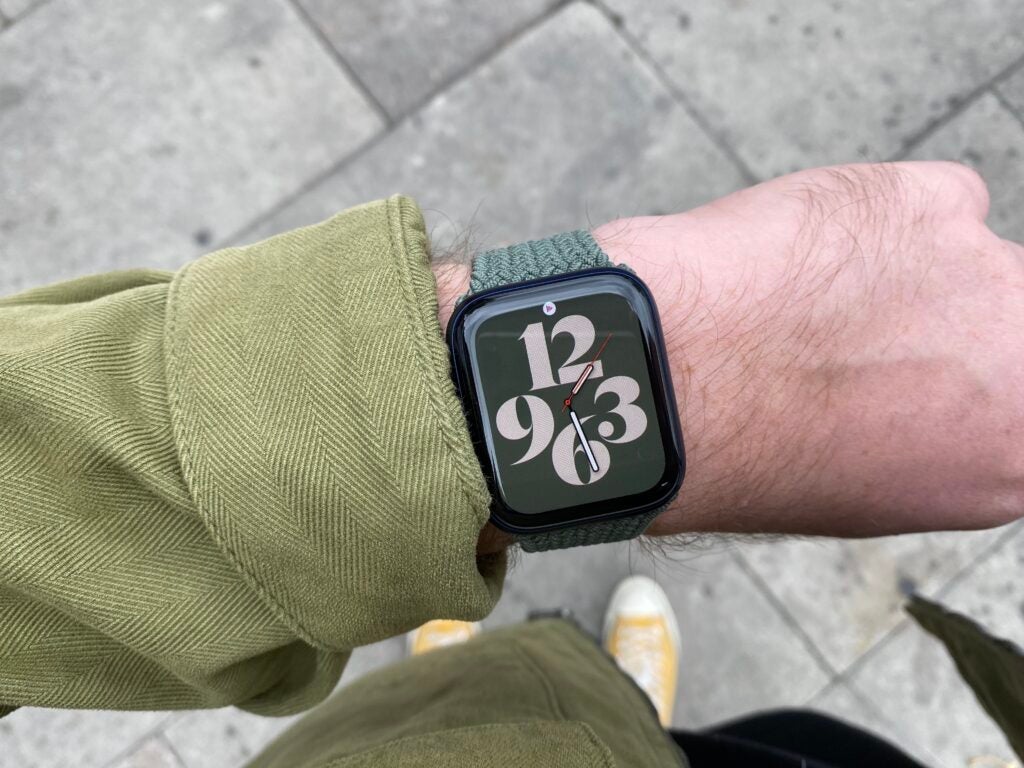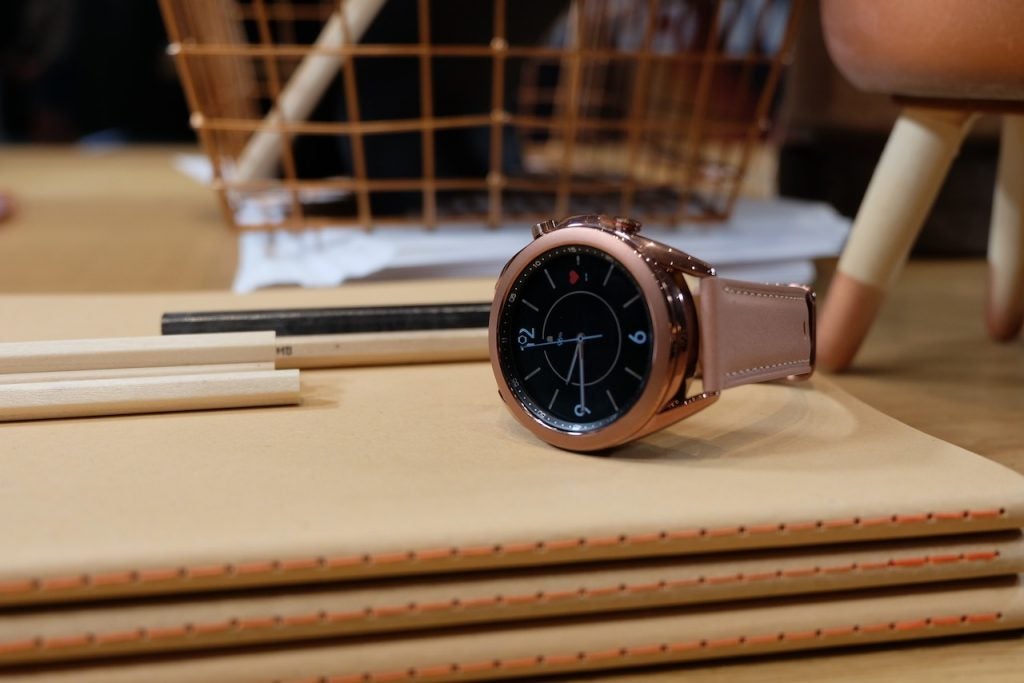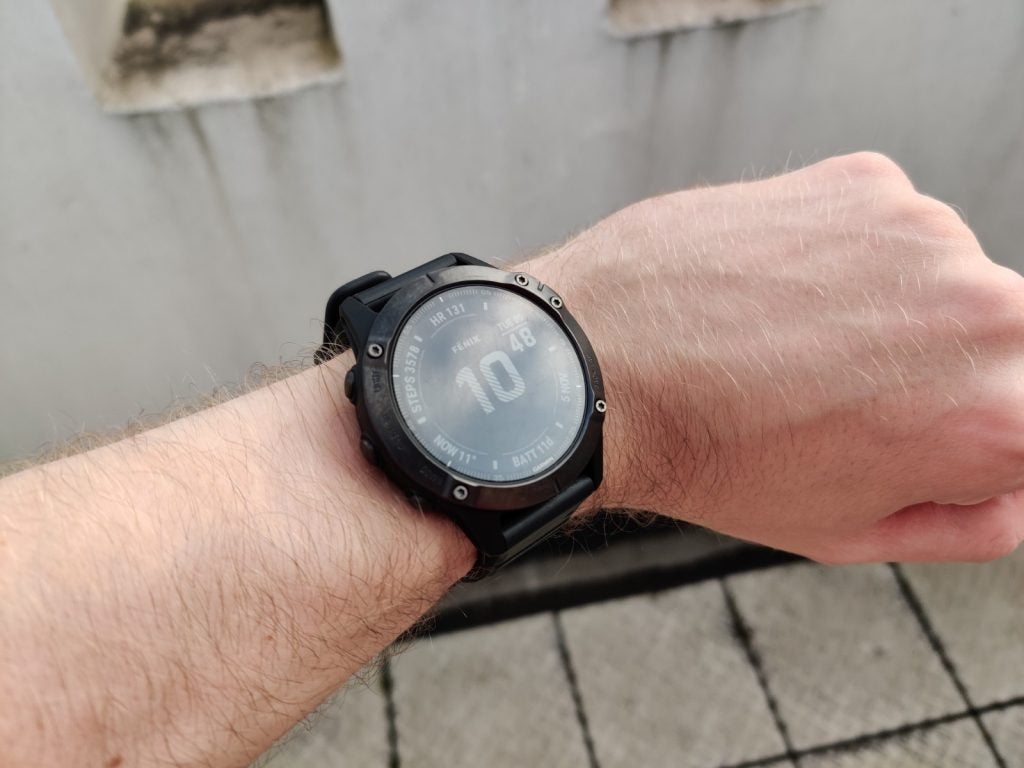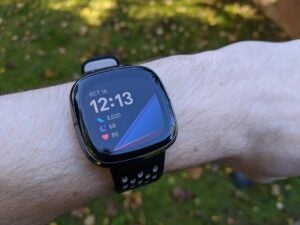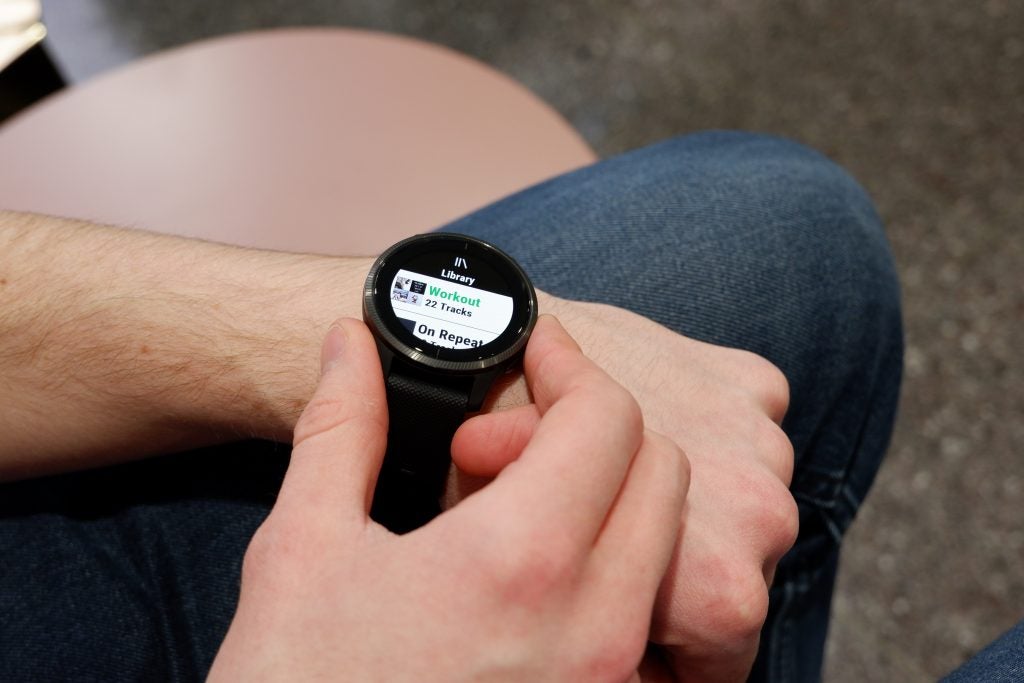Smartwatches have come a long way in the last few years, with many wearables these days able to tell you a lot more than just the time. From sports scores to text notifications to alerts about your health, these watches come with a variety of features, making it tricky to decide which best suits your needs.
Here at Trusted Reviews, we’ve gathered all of our favourite smartwatches in this handy guide to help you choose which wearable is best for you, whether you’re searching for a device to take calls and texts on or something more fitness-oriented.
When it comes to shopping for a smartwatches, you might be tempted to head straight for the Apple Watch. However, countless brands have made their mark in the wearable market over the last few years and there are plenty of great options available to Android users too.
Likewise, if you’re on the hunt for a fitness tracking device and aren’t in need of full blown app support, you might want to gear more toward a Fitbit or a device from Garmin than Apple or Samsung’s offerings.
Even if you do know what you want it’s important to note not all smartwatches, even the ones from big name brands, are created equal. Some fall woefully short of their potential. Key issues being terrible battery life, slow GPS and a lack of key functionality, like local music playback.
This definitive list lets you skip straight to the best smartwatches out of the countless amount we’ve tested.
Of course, there are also a number of smartwatches that specialise in exercise and health monitoring that didn’t make the cut in our best smartwatch category. You can check out our best fitness tracker guide if this is more your speed.
Here’s our summary of the best smartwatches, with options that will suit most people. Scroll down to read our full reviews for each, or to see the complete list.
- Best Smartwatch: Apple Watch 6
- Best for Android: Samsung Galaxy Watch 3
- Best Apple Watch for Most people: Apple Watch SE
- Best for semi-serious runners: Garmin Vivoactive 4
- Best for Google services: TicWatch Pro 3
- Best for triathletes: Garmin Fenix 6
- Best Apple Watch on a budget: Apple Watch Series 3
- Best for battery life: Huawei Watch GT 2 Pro
- Best for simplicity: Honor MagicWatch 2
- Best for Alexa: Fitbit Sense
- Best for minimalism: Garmin Venu
- Best looking: Withings ScanWatch
How do we pick the best smartwatches?
Before we score any smartwatch (or any other wearable for that matter) one of our expert reviewers will wear the device for at least a week before reaching a verdict. We see how each smartwatch operates, check all of the advertised claims and features, and conduct a variety of battery tests based on different use cases (for example, we log longevity with and without constant heart rate monitoring).
We try and keep conditions as uniform as possible so that we can draw fair comparisons between similarly capable devices.
1. Apple Watch Series 6
The best smartwatch
Pros:
- Great design
- Excellent fitness and health tracking
- Wide range of straps
Cons:
- Battery life remains basically a day
The Apple Watch 6 (or Series 6) is the best smartwatch you can buy now – if you have an iPhone that is, as Apple still doesn’t let Android users embrace this fantastic wearable.
While the new features are kept to a minimum this year, there’s still enough here to make it stand out. It can now measure your blood oxygen levels and it comes in a few new finishes, including blue and red. It still sports the same great sensors as before, for accurate GPS tracking and the altimeter is now always on.
The display is a little brighter and the performance a tad faster, but really this just a slightly improved version of the Apple Watch we love so much.
2. Samsung Galaxy Watch 3
The best for Android users
Pros:
- Super swish design
- Solid fitness and health tracking
- Decent smartwatch functionality
Cons:
- Battery life could be better
Apple’s watchOS software is universally regarded, including by us, as the best on the market. But it doesn’t work with Android phones, which leaves the majority of people in a bit of a bind when it comes to wearables. Enter the Samsung Galaxy Watch 3.
The Galaxy Watch 3 is the latest top end wearable from Samsung and it’s one of a select few wearables to give the Apple Watch a run for its money when it comes to hardware and services.
The Galaxy Watch 3 features a wonderfully bright OLED screen, distinctly watch-like circular design and Samsung’s own Tizen software.
The software is the key selling point. In the current market Tizen OS is one of the most developed wearable ecosystems outside of Watch OS. It features a more intuitive UI than Google’s Wear OS platform and supports all the major apps and services you’d expect.
Add to this robust health/fitness tracking services and in-built fall detection, and the Galaxy Watch 3 earns a place as the best option for most Android phone users right now.
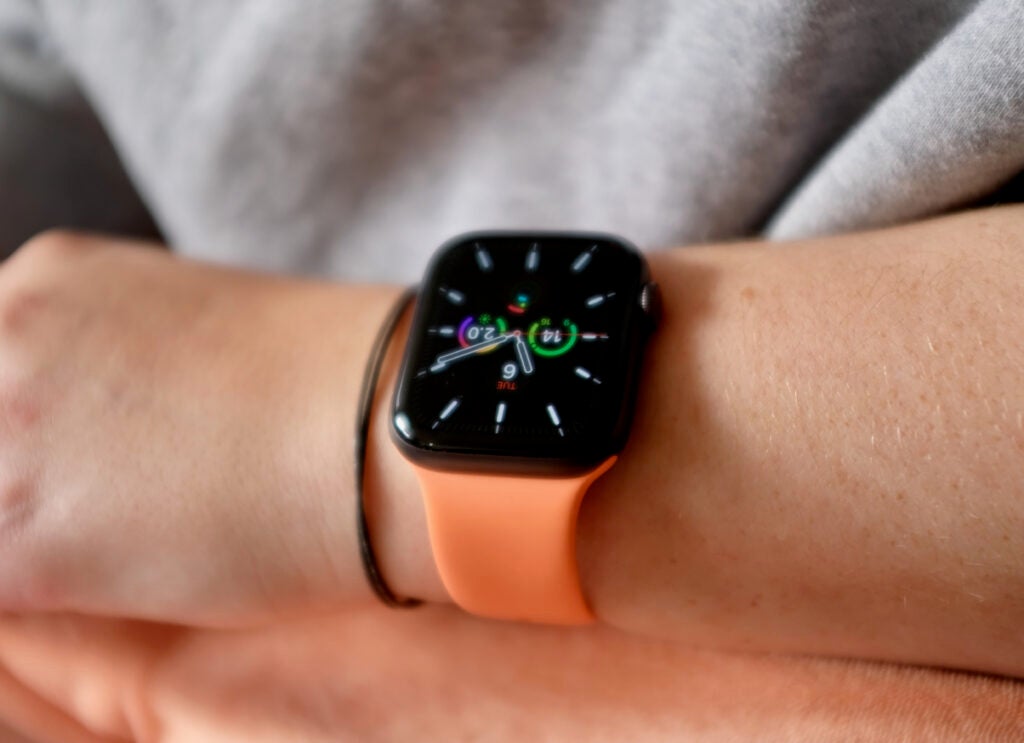
3. Apple Watch SE
The best Apple Watch for most people
Pros:
- Excellent value
- Huge range of tracking features
- The best smartwatch OS around
- Wide variety of straps available
Cons:
- No always-on display
- Battery life still only really a day
The Apple Watch SE is the middle child in Apple’s current wearable line-up sitting between the ultra-affordable Watch 3 and spiffy new Watch 6 flagship.
Its feature set matches its price tag, making it the best option for most buyers as a result. Highlights include a larger OLED screen than the Apple Watch 3, a more powerful S5 chip chip and choice of 40mm and 44mm size options.
It also ticks most of the right boxes for mid-level athletes featuring GPS, water-resistance for swimming and an accelerometer for detecting if you suddenly fall over.
This plus its stellar watchOS 7 software make it the best smartwatch for most buyers on the market at the moment, even if it is missing a few of the Watch 6’s more advanced features, like an always on display, ECG reader and SpO2 sensor.
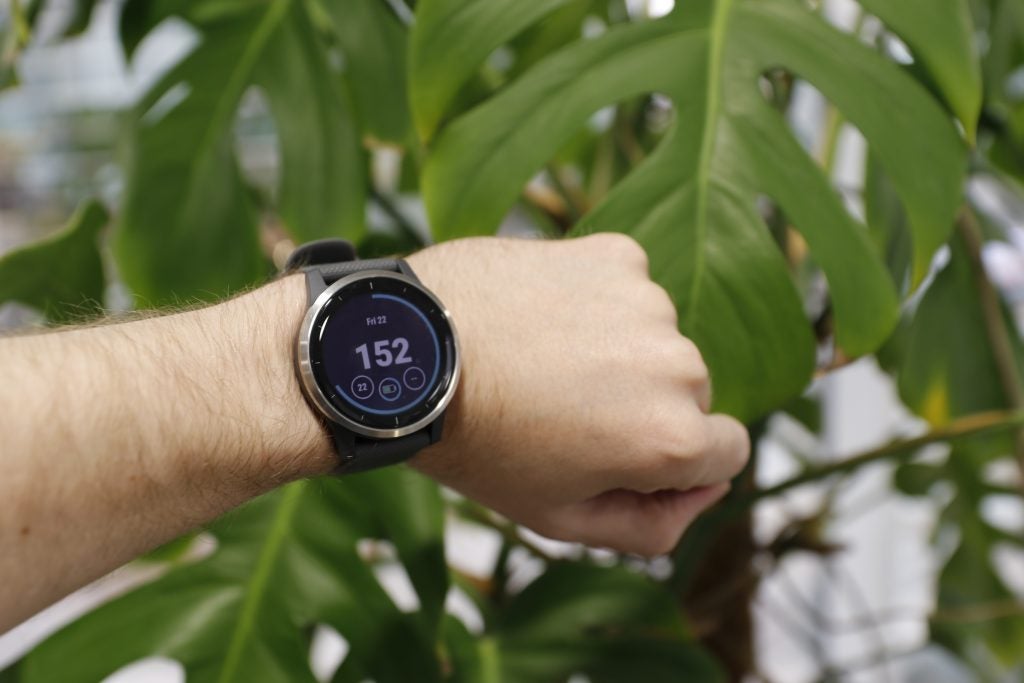
4. Garmin Vivoactive 4
A great range of health-tracking services – plus a few surprises
Pros:
- Can track pretty much every sport you can think of
- Looks like an actual watch
- Solid battery life
- New wellness features work well
Cons:
- More expensive than the competition
- App offering could be better
The Vivoactive 4 is one of the best mid-tier fitness trackers on the market. If your budget will stretch to it, this fitness tracker offers all the trimmings and looks equally at home in the gym as it does when you’re out and about. Highlights include stellar GPS location tracking, inbuilt storage for music and maps, and the ability to track an extremely comprehensive range of sports.
Unfortunately, the Vivoactive 4’s smartwatch app library still lags woefully behind the competition. Casual users and those looking for a device that’s primarily a smartwatch would do better to consider the Fitbit Iconic or an Apple Watch.
However, the Vivoactive 4’s superb fitness tracking portfolio more than makes up for its smartwatch shortcomings. It ticks all the boxes for toughness and usability. It comes with everything you’d expect from a tracker and can monitor pretty much every form of exercise you can think of, from your morning jog and weight training to yoga and cross-country skiing. The plethora of extra metrics Garmin’s added to the Vivoactive 4 really sets it apart; options include tracking estimated sweat loss, respiration rate and pulse ox level.

5. TicWatch Pro 3
Wear OS has never felt so smooth
Pros:
- Fast performance, courtesy of Wear 4100
- Long battery life for a Wear OS watch
- Dual-display is still a winner
Cons:
- The design isn’t as bold this time around
- Questionable heart rate tracking for weightlifting
- No Google Play Music equals no offline listening
The TicWatch Pro 3 marks the first device to sport the Snapdragon 4100 processor, offering the Wear OS device a level of performance that can truly contend with the Apple Watch.
The upgrade makes Google’s Wear OS fluid and responsive, making the act moving between apps a joy. On top of this, the TicWatch takes advantage of Mobvoi’s own suite of built-in apps, including TicSleep, TicExercise and TicZen. Google has yet to offer its own sleep-tracking app, making TicSleep a very welcome addition here.
The watch also boasts an easy-to-read backlit dual display and 40% longer battery life than its predecessor. There’s even an Essential mode that can last for up to 45 days when you’re running low – if you’re willing to sacrifice some smart features, that is.
6. Garmin Fenix 6
Best smartwatch for triathletes
Pros:
- Excellent location and fitness tracking
- Unbreakable design
- Two-week battery life
- Heart rate monitor works underwater
Cons:
- Smartwatch functionality still limited
If you’re a hardcore athlete seeking the ultimate smartwatch, the Fenix 6 is one of the leading fitness trackers on the market – arguably even the best. The Garmin Fenix 5 is still superb and this model doesn’t offer a huge upgrade, but some subtle changes, super-tough design and excellent sensors and location tracking features combine into a stellar tracker that’s ideal for serious fitness aficionados looking to up their game.
Smartwatch functionality is somewhat lacking as the Fenix 6 is primarily a fitness tracker. Casual gym goers or runners looking for an Apple Watch rival would do better to consider cheaper models from Fitbit and Garmin, which has a great Vivo line of trackers.
As the Fenix 5 was already best in class for fitness, it’s a real achievement that the Fenix 6’s multisport and tracking features offer even more improvement. The biggest updates relate to heart rate and location/distance tracking. The Fenix 6’s heart rate sensor works underwater – a boon for swimmers, sailors and divers, who would previously have had to invest in a separate HRM strap to get the data on the older Fenix 5 family.
The only real downside, perhaps unsurprisingly, is the price, which starts at £529.99 – a serious investment, even by Apple Watch standards. A strong focus on durability and functionality over form might reduce its appeal to fashion-conscious buyers.
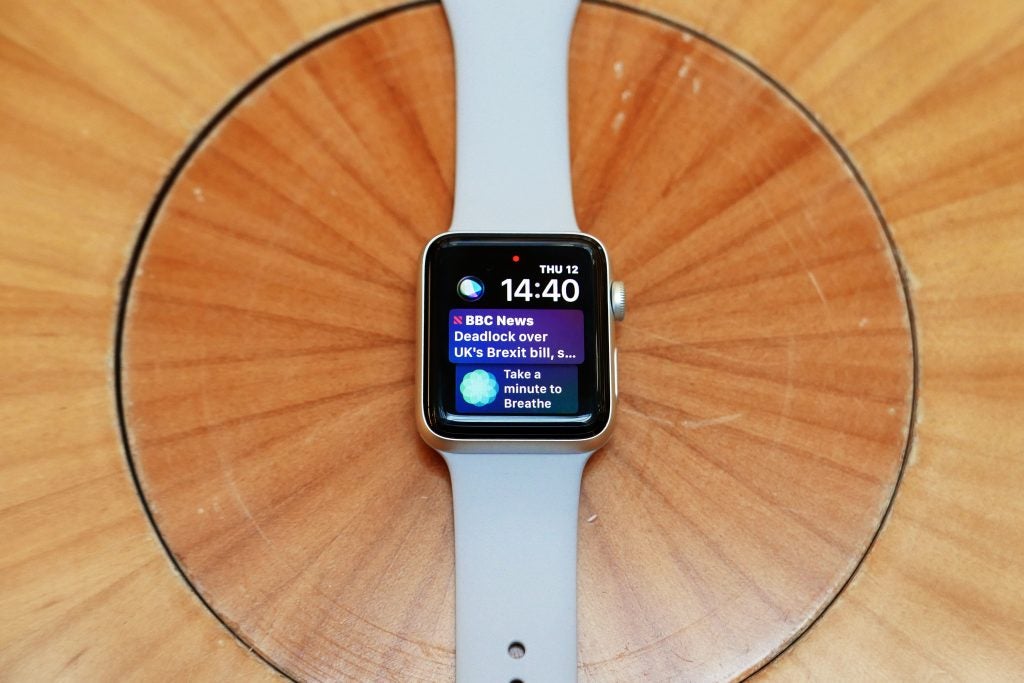
7. Apple Watch Series 3
Best smartwatch for iPhone users on a budget
Pros:
- Snappy performance
- Super-bright and clear display
- Decent battery life (when not reliant on LTE)
- Apple Pay
Cons:
- LTE has a big impact on battery life
- Needs more dedicated watch apps to make use of LTE
- Siri doesn’t always work
- No LTE roaming
With the arrival of the Series 4, Apple retired the humble Series 1 and trimmed the Series 3 line down to serve as the “affordable” Apple Watch. The price of the Series 3 has continued to drop since.
You can still choose between GPS-only and cellular versions of the Series 3. However, the finish options have now been cut back to just silver or black-bodied aluminium, with a white or black Sport Band respectively.
The Series 3 introduced an altimeter for elevation tracking and is a good option for swim tracking, with water resistance up to 50m. Updated watchOS 7 support is also an appreciated feature.
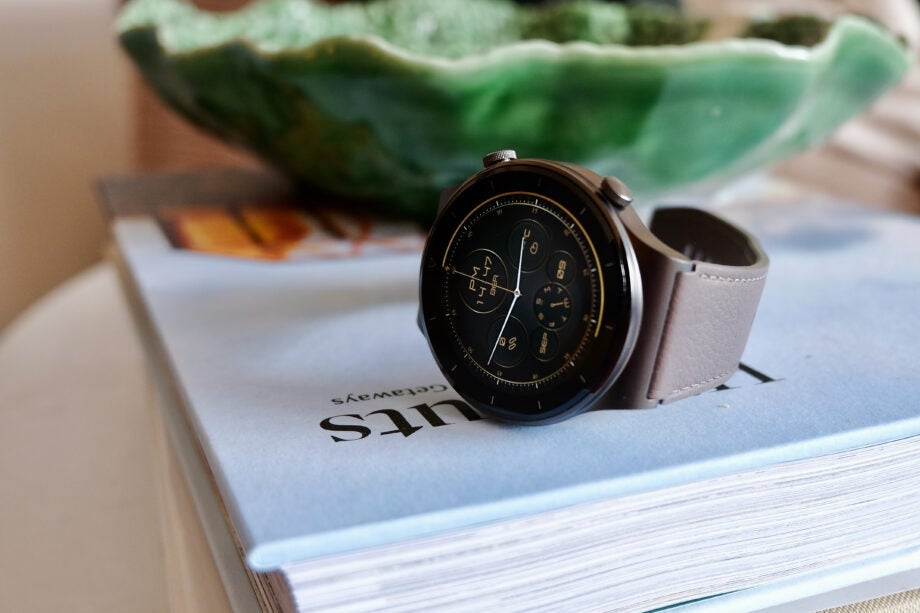
8. Huawei Watch GT 2 Pro
Best smartwatch for battery life
Pros:
- Reasonable price
- Good fitness tracking
- Attractive design
- Formidable battery life
Cons:
- A bit slow
The Huawei Watch GT2 Pro is the brand’s latest smartwatch that runs its own software, offering Android users a good alternative to Wear OS and Tizen. The OS remains somewhat limited when it comes to apps but the focus on fitness tracking is strong.
Design mimics that of a traditional timepiece; there’s a 1.4-inch OLED circular display with a 462ppi and two buttons on the side.
Excellent battery life is the Huawei Watch GT2’s biggest plus, especially for anyone who’s been putting off switching to a smartwatch because they don’t want to have to charge it every night. We managed around two weeks of use on a single charge, which is far better than most of the competition. It is a little slow in terms of performance, though.

9. Honor MagicWatch 2
A tempting prospect for amateur athletes
Pros:
- Onboard GPS
- Neat design
- Good value
Cons:
- Lacks smart features
The good-looking design of the MagicWatch 2 takes its style from a traditional timepiece and its AMOLED touchscreen is sharp and bright. It offers good value for money, especially considering its sharp design and attractive screen, in partnership with its enduring battery life. Honor claims that the MagicWatch 2 will last for 14 days before it needs recharging, and our testing bore that out. This endurance is impressive, especially when compared to costly rivals like the Apple Watch.
For health and fitness features, the wearable synchronises with the Huawei Health app. It’s got 24-hour heart-rate tracking (even during swimming), sleep tracking, and onboard GPS, so it’s capable of providing good feedback for a range of activities, including running and skiing.
The app gives you full information on exercise after it’s complete, and the interface on the watch also offers some useful stats; you can scroll left to right for heart rate, stress levels, weather forecast, music and fitness daily goals, while the main menu offers handy tools like a flashlight, stopwatch, and a “find my phone” function.
As a fitness tracker, this device fits the bill for most people’s needs; it’s accurate, has all the features you’re likely to want, and all for a good price. Its attractive looks and strong battery performance are also recommending factors. But if you want a convenient device that lets you cut down on smartphone screen time in favour of a wrist-based companion, you may be disappointed by the slim range of smart features.
10. Fitbit Sense
Best smartwatch for Alexa
Pros:
- New focus on health tracking
- Great battery life
- Fast GPS tracking
- Informative running data
Cons:
- Offline playback limited to Pandora/Deezer
- Overzealous step counter
- Fitbit Premium required for best use
- Back panel scratches easily
Fitbit made the decision to move beyond fitness tracking into health tracking in 2020 and its timing couldn’t have been better. The Fitbit Sense is a smartwatch packed with health tracking features, including an SpO2 tracker, an ECG sensor and even an EDA sensor for measuring your stress.
Of course, the Sense also offers some great fitness tracking features. You can check heart rate, distance covered and the time from your wrist while working out, and there’s a built-in GPS tracker for runners.
The 1.58-inch curved AMOLED display is bright, modern looking and the six day battery life offers an improvement over the already decent Fitbit Versa 2. You’ll get the best use out of the device with a Fitbit Premium subscription however, so it may be worth considering whether you’d be happy to subscribe before putting this smartwatch in your basket.
11. Garmin Venu
A stellar workout companion that also doubles as a stylish timepiece
Pros:
- Best-in-class fitness tracking
- Battery life of up to five days
- Bright AMOLED display
Cons:
- High asking price
- Too similar to the Vivoactive 4
Garmin has been making subtle changes to an already clean design with each new entry in the Vivoactive series, aiming to make a sports watch that can be worn out and about, and the Venu continues this trend. It is equally at home on your wrist at the gym or on a night out – which is just as well, given that in order to get the most out of the device, Garmin expects you to wear it all the time.
Garmin’s devices have always boasted superb battery life, and the Venu is easily comparable to modern smartwatches – and not just sports watches. Its battery life of up to five days puts the competition to shame: even the Fossil Gen 5, which brought in a bunch of new battery-saving modes to help it last over several days, can’t compare.
The Venu is built around Garmin’s unbeatable fitness tracking software, which has finally joined mainstream with the inclusion of a much-needed AMOLED display. It’s no secret that, when it comes to tracking workouts, Garmin absolutely wipes the floor with the competition, and the Venu offers the user a wealth of data – there really isn’t anything else quite like it. There’s still room for improvement, however when it comes tracking reps, particularly during strength exercises.
While fitness is at the centre of its design, the Venu is still very much a modern smartwatch, with all the bells and whistles you’d expect. If your budget can stand it, consider opting for the Venu over the Vivoactive 4 – but for those who don’t have money to burn, it might be worth holding off until there’s a price drop.

12. Withings ScanWatch
A health tracker for those in need of a more classic looking design
Pros:
- Oozing in sophistication
- Battery life champion
- Simple to use interface
- Great app design
Cons:
- Lagging in fitness tracking
- No GPS or NFC
If you’re looking to introduce some smartwatch functionality to your life without sacrificing the style associated with a classic timepiece, the Withings ScanWatch is certainly an eye-catcher.
While the ScanWatch lacks a few of the skills expected of a modern fitness tracker – such as built-in GPS – it does offer a plethora of fantastic health tracking features. These include a medical-grade ECG scanner for detecting signs of atrial fibrillations and SpO2 tracking to help spot underlying illnesses.
The Health Mate app allows you to glance at all your measurements, from sleep tracking to workout recordings, on the go, with more stats available when your click on each category.
The ScanWatch also boasts an incredible battery life. Withings claims the watch can run for up to 30 days on a single charge and we were impressed with how long it lasted in our review. If you’re searching for a stylish smartwatch with effective health tracking and a big battery, then look no further.
How do I choose the right smartwatch for me?
The above picks are our absolute favourite wearables, but read on if you need to find out more about smartwatches and what to look out for when you’re buying one.
Which is the best operating system?
Currently, there are three big smartwatch operating systems: watchOS from Apple, Wear OS from Google and Tizen from Samsung. Fitbit, a relative newcomer to the smartwatch space, has its own Fitbit OS but so far none of its smartwatches have made this list. A big reason for this is lack of app support, which is a key consideration when picking your smartwatch. Right now, watchOS is by far the best supported for apps, followed by Wear OS, with Tizen lagging behind.
What are the key considerations when choosing the best smartwatch?
Aside from the operating system, you should also consider how you intend to use your smartwatch. Many now double as fitness trackers and sports watches, and if this is important to you, choose a smartwatch with built-in GPS and a heart rate sensor. It’s worth noting that smartwatches with these features are often much bigger.
Water resistance is ideal across the board. Even if you’re not a swimmer, it’s convenient to be able to leave your smartwatch on when you have a shower and not have to worry about it during a downpour.
Battery life is the other big consideration. In the early days, many smartwatches struggled to last a single day. Most have now improved considerably, and can offer at least two days without a charge – the minimum we’d recommend.
